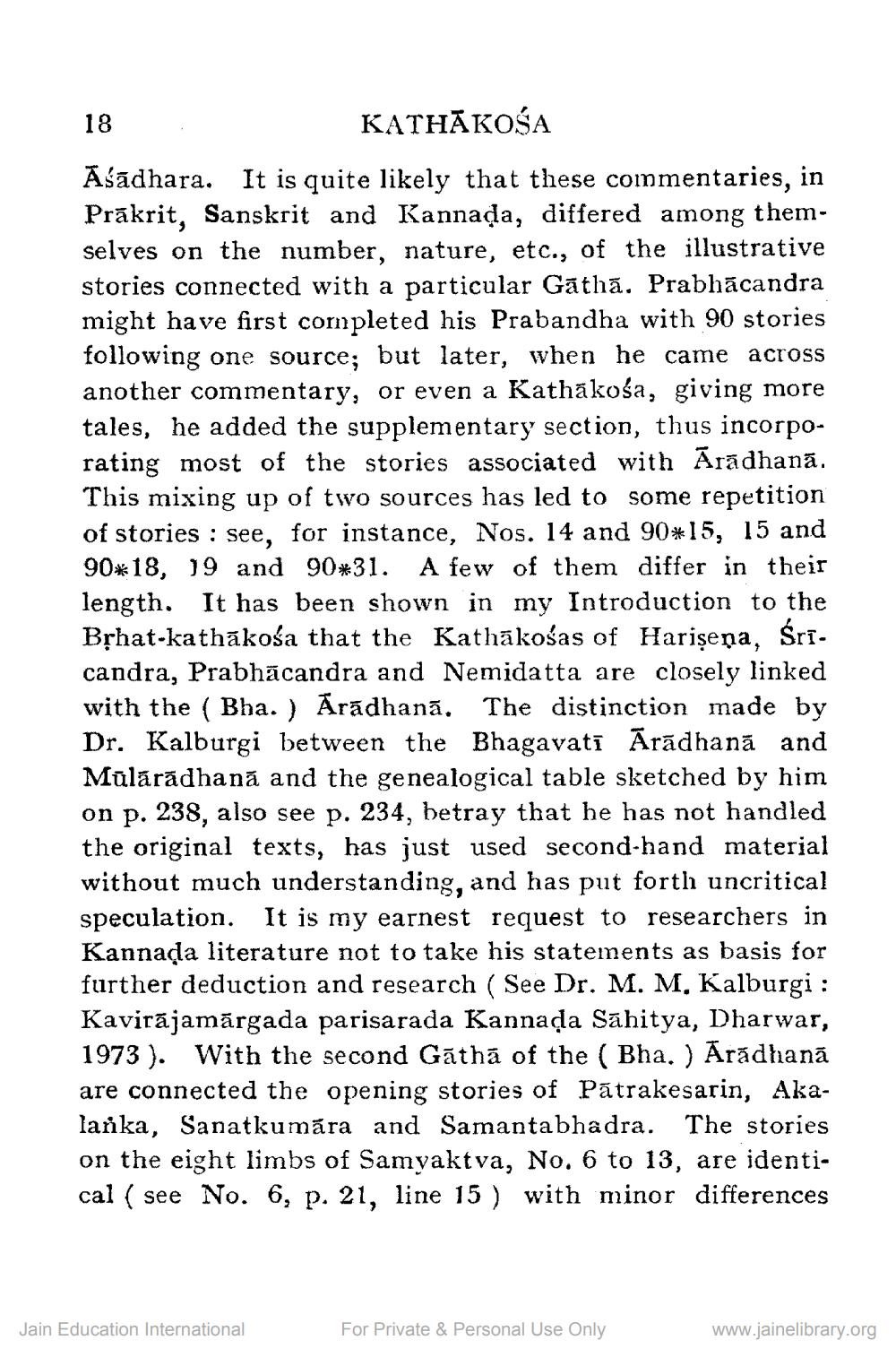________________
KATHĀKOŠA
Asadhara. It is quite likely that these commentaries, in Prakrit, Sanskrit and Kannada, differed among themselves on the number, nature, etc., of the illustrative stories connected with a particular Gatha. Prabhācandra might have first completed his Prabandha with 90 stories following one source; but later, when he came across another commentary, or even a Kathakośa, giving more tales, he added the supplementary section, thus incorporating most of the stories associated with Aradhanā. This mixing up of two sources has led to some repetition of stories: see, for instance, Nos. 14 and 90*15, 15 and 90*18, 19 and 90*31. A few of them differ in their length. It has been shown in my Introduction to the Bṛhat-kathākośa that the Kathākośas of Hariṣeņa, Śrīcandra, Prabhācandra and Nemidatta are closely linked with the (Bha.) Ārādhanā. The distinction made by Dr. Kalburgi between the Bhagavatī Ārādhanā and Mūlārādhana and the genealogical table sketched by him on p. 238, also see p. 234, betray that he has not handled the original texts, has just used second-hand material without much understanding, and has put forth uncritical speculation. It is my earnest request to researchers in Kannada literature not to take his statements as basis for further deduction and research (See Dr. M. M. Kalburgi : Kavirajamargada parisarada Kannaḍa Sahitya, Dharwar, 1973). With the second Gatha of the ( Bha. ) Ārādhanā are connected the opening stories of Patrakesarin, Akalanka, Sanatkumara and Samantabhadra. The stories on the eight limbs of Samyaktva, No. 6 to 13, are identical (see No. 6, p. 21, line 15) with minor differences
18
Jain Education International
For Private & Personal Use Only
www.jainelibrary.org




